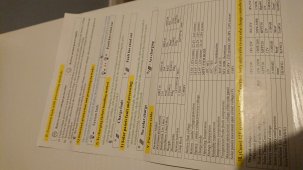leesmith2097
New Member
- Joined
- Nov 14, 2021
- Messages
- 35
Hi
I have 1 x 160w solar panel which is about nearly 9 amps max, the max voltage must be about 18v.
Its connected to a 20amp MPPT and PWM charge controller with a 12v 120ah leisure battery.
The power rating of the cables from the charge controller to the battery are 10 AWG which carry up to 20 amps at a high voltage.
I am abit confused with my current setup first of all so bear with me in terms of all the questions
1) if the battery is 12v but the solar panel is capable of 18v, does that mean it can only charge at a max of 12v x 9 amps = 108watts which means im losing 52 watts in direct sunlight?
2) if I want to add an additional panel which is 320w im assuming I need to add it in a series and consider the max voltage of the mppt / pwm charge controller which I think is 48v. If I did do it in a series i would only get the max amps of the 160w panel because the 320w is 10amps, the 160w panel is 9 amps, but would get the voltage of both which is about 18v + 32v = 50v.
3) im assuming the 320w panel volts would be 35.5v though if you divided 320 by 9 amps would be 35.5v?
4) could I just buy another mppt charge controller to run the 320w panel separately? then connect both charge controllers to the 12v battery? (ive read this would work)
my main concern is all this extra voltage and the battery is only 12v, i want to make the most out of the system.
any assistance with me adding the 320w panel would be great. I am wanting to add another panel, make the most of the amount they can produce and also add an ongrid inverter eventually.
I have 1 x 160w solar panel which is about nearly 9 amps max, the max voltage must be about 18v.
Its connected to a 20amp MPPT and PWM charge controller with a 12v 120ah leisure battery.
The power rating of the cables from the charge controller to the battery are 10 AWG which carry up to 20 amps at a high voltage.
I am abit confused with my current setup first of all so bear with me in terms of all the questions
1) if the battery is 12v but the solar panel is capable of 18v, does that mean it can only charge at a max of 12v x 9 amps = 108watts which means im losing 52 watts in direct sunlight?
2) if I want to add an additional panel which is 320w im assuming I need to add it in a series and consider the max voltage of the mppt / pwm charge controller which I think is 48v. If I did do it in a series i would only get the max amps of the 160w panel because the 320w is 10amps, the 160w panel is 9 amps, but would get the voltage of both which is about 18v + 32v = 50v.
3) im assuming the 320w panel volts would be 35.5v though if you divided 320 by 9 amps would be 35.5v?
4) could I just buy another mppt charge controller to run the 320w panel separately? then connect both charge controllers to the 12v battery? (ive read this would work)
my main concern is all this extra voltage and the battery is only 12v, i want to make the most out of the system.
any assistance with me adding the 320w panel would be great. I am wanting to add another panel, make the most of the amount they can produce and also add an ongrid inverter eventually.






